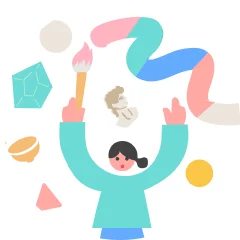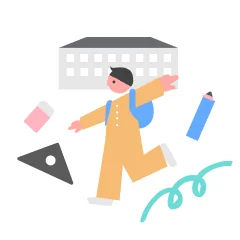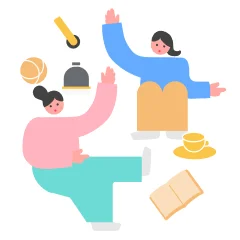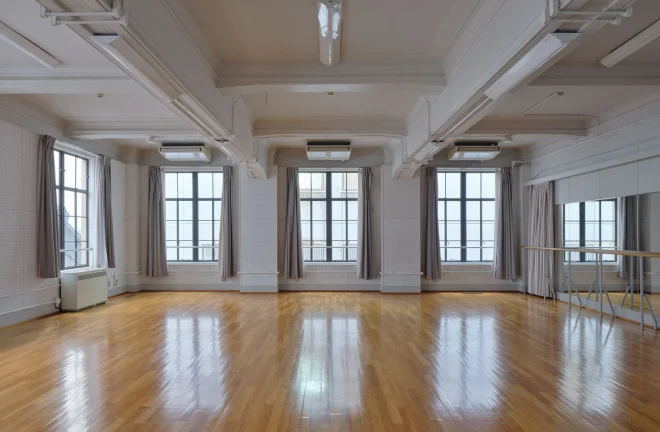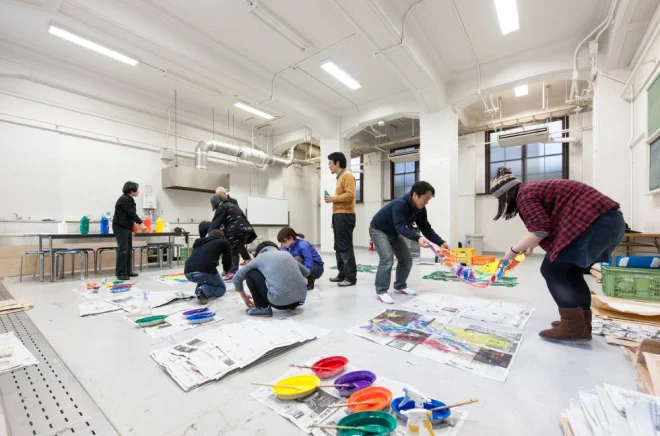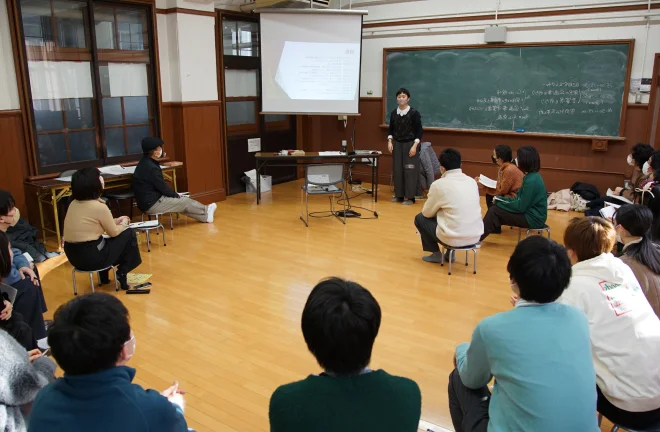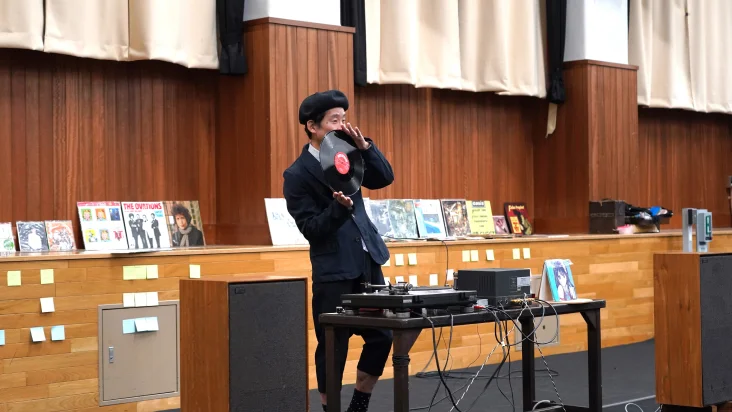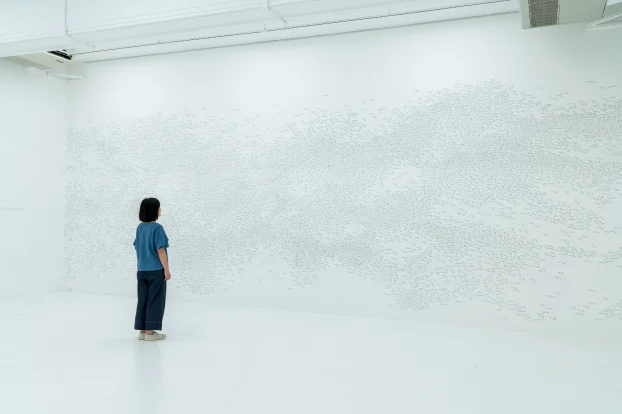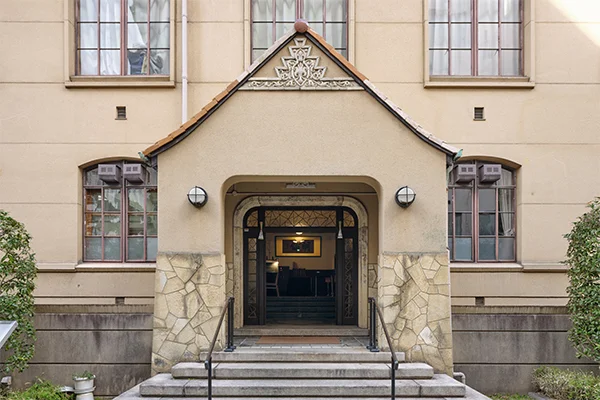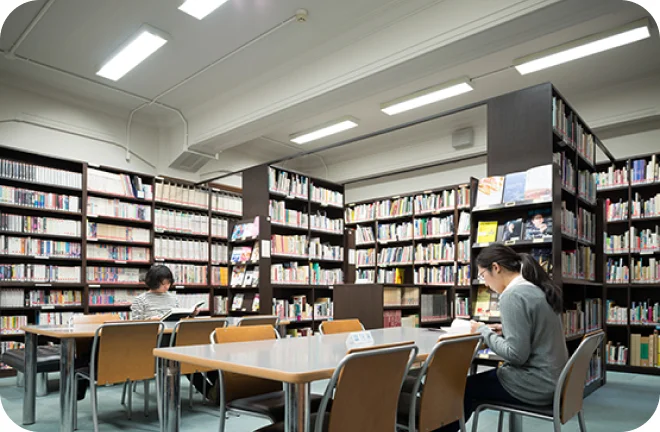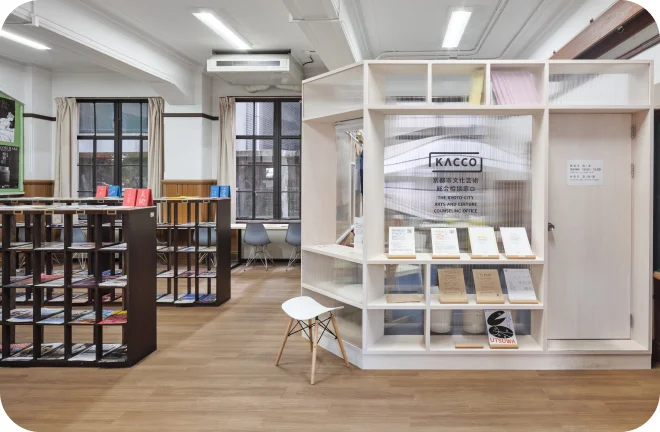SCROLL

What is Kyoto Art Center?
Kyoto Art Center is an arts and culture facility located in the former Meirin Elementary School building near Shijo-Karasuma.
In the building, which still retains the vestiges of the former elementary school, a variety of events are held daily, including exhibitions, stage performances, workshops, and talks by artists. Since its opening, the facility has also provided artists with a production room and publicly solicited applications for exhibitions and performances as part of its efforts to revitalize artistic and cultural activities in Kyoto.
The following is a summary of the six key features of Kyoto Art Center, a center for arts and culture.
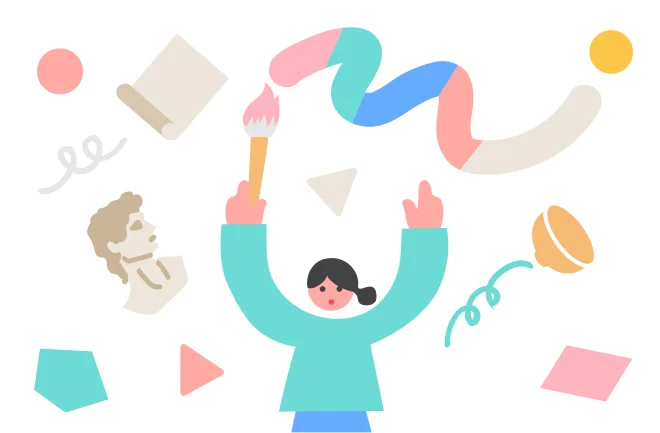
01
Support for artists’ production
To support the activities of emerging or young artists, we provide “Studios” free of charge. The provision of the production room, which serves as an infrastructure for artists, has been ongoing since the museum opened in 2000, and various artists active in Japan and abroad have used the room as a production site during their younger years.
Testimonials from Artists
Center’s Comment
The classroom-turned-studio offers various unique features in each room. While there is a screening process, we encourage a wide range of people, including young artists and those eager to take on new projects, to utilize the space. If you’re interested in applying, feel free to reach out to us!
Program director Ryuichi Tani

02
Open call for artists
to foster creativity together
As a partner in fostering new creative activities utilizing the Kyoto Art Center space, we offer a variety of open calls for artists.
Click here for the latest information on open calls.here 。
- Artist-in-Residence Program
-
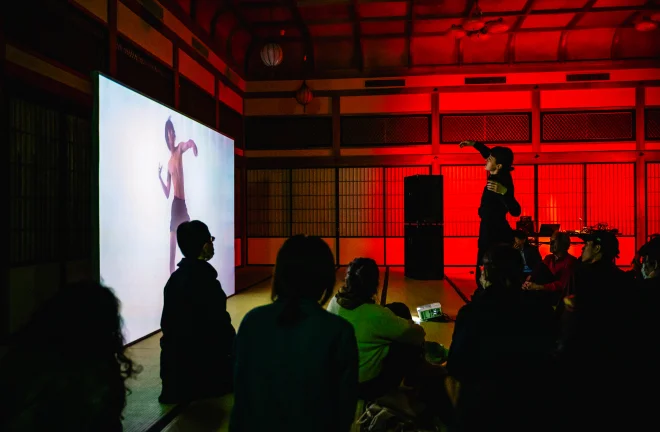
photo by OMOTE Nobutada This is a program in which artists from Japan and abroad stay at Kyoto Art Center for a certain period of time to create artworks and engage in exchanges.
Since its opening in 2000, Kyoto Art Center has been involved in exchanges with numerous countries both through invitations and dispatches.
- Co-program
-
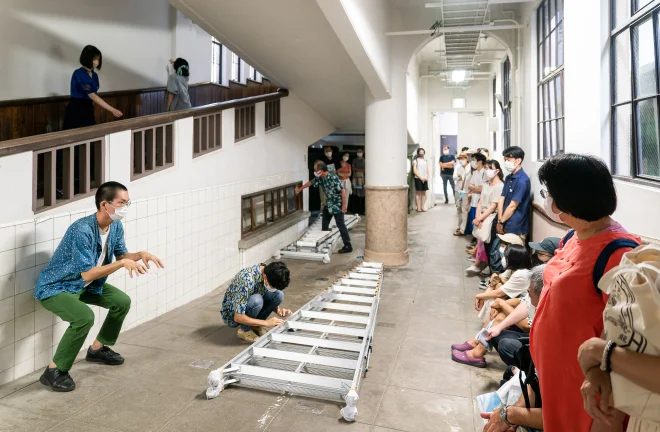
photo by IMAI Yuuka Launched in 2017, this program invites applicants to submit project plans for co-sponsorship with Kyoto Art Center. The applicant and Kyoto Art Center act as co-sponsors and work together on creation and experimentation toward the realization of the adopted plan, such as a performance, exhibition, or research.
- KAC Partnership Program (co-sponsored project)
-
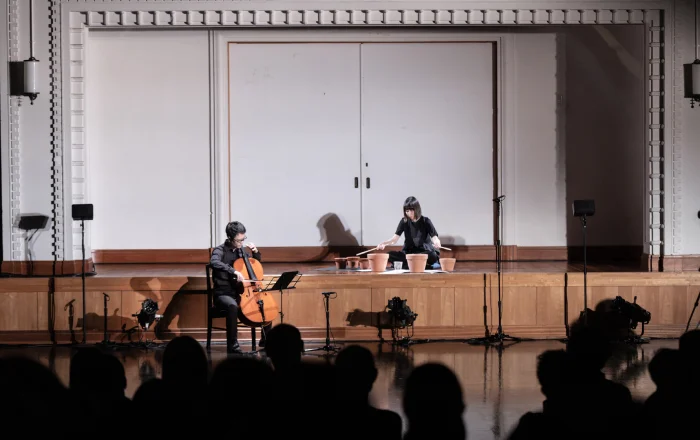
photo by NAKATANI Toshiaki A public call program launched in 2023 to present artworks using the Kyoto Art Center space and to co-sponsor activities to improve the creative environment.
- Traditional Theater Training(T.T.T.)
-
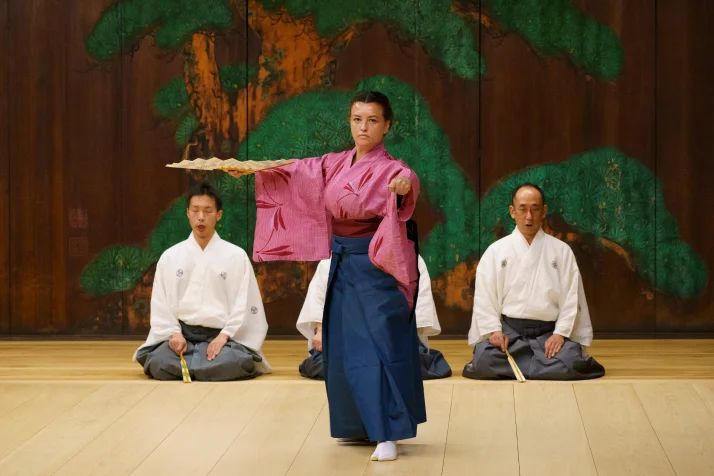
photo by OOSHIMA Takuya This is a traditional performing arts training program for those involved in the performing arts.
Participants practice Noh, Kyogen, and Nihon Buyo (traditional Japanese dance) for approximately three weeks and present the results at the Oe Nohgakudo.

03
Exhibitions, Performances and Events
As an opportunity for visitors to become familiar with the world of art, a variety of events are held, including exhibitions, stage performances, and workshops by artists.
Major Exhibitions, Performances and Events
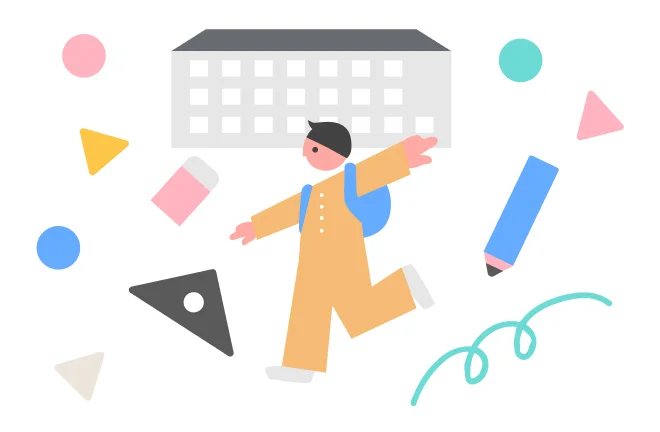
04
Building utilizing a former elementary school
Opened in 1869, Meilin Elementary School was closed in 1993 and reopened as Kyoto Art Center in 2000.
The former elementary school building has been used as it is, and is a quaint and picturesque place to find a spot.
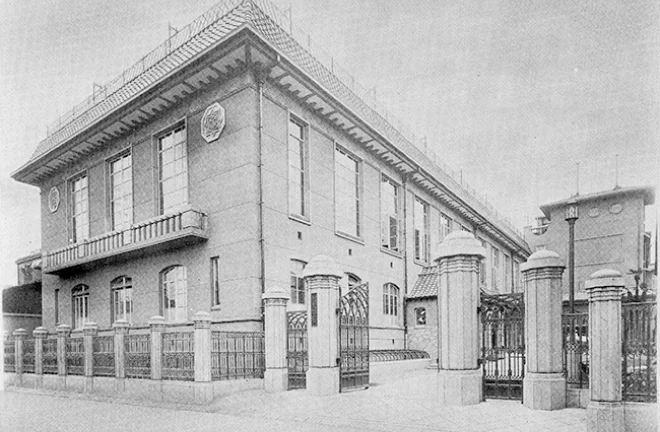
Center’s Comment

05
Cafes and libraries
open to all
In addition to exhibition and performance space, it has a café and library that can be freely accessed.
Maeda Coffee Meilin
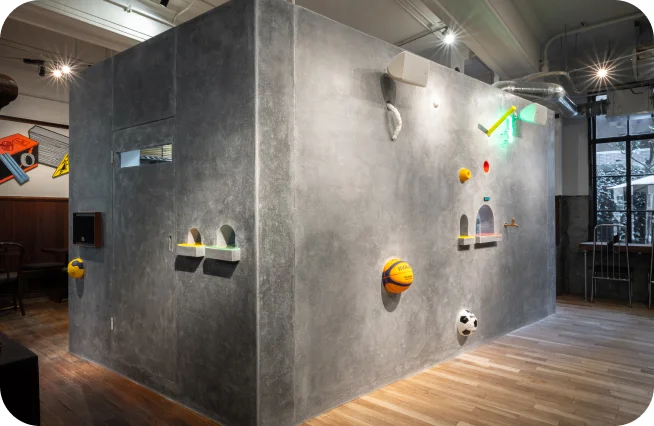
Starting from a drawing in 2001, the Tower series has been transformed into various forms of artwork. The only one existing in physical space, KITCHEN, features a box-shaped kitchen through which various objects and images, along with food and drinks, come and go. The mysterious box, Tower, serves as a device for generating imagination, and I hope that the space created by the hole and the space in front of it will become a place where new encounters and communications take place.
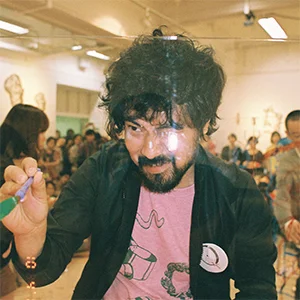
Artist Teppei Kaneuji photo by Kayo Ume
The artwork doubles as a kitchen, with employees working inside it, a concept truly unique to the Kyoto Art Center. It’s all seamlessly integrated into the artwork, which is prominently positioned in the center of the floor. We invite you to experience a delightful and memorable time, exclusive to the Kyoto Art Center.
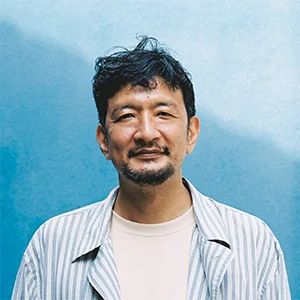
Architect Toshikatsu Ienari photo by Yuma Harada
Information Room & Library
The library has about 5,500 items on the shelves, and an information corner where posters, flyers, and direct mail from galleries, museums, and theaters in Kyoto and throughout Japan are distributed free of charge.
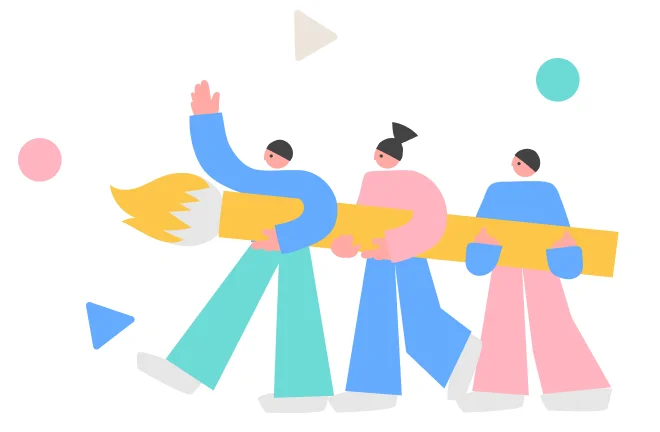
06
Supporter System for Arts and Cultural Activities in Kyoto
This support system supports the activities of Kyoto Art Center and other artistic and cultural activities in Kyoto.
Volunteer staff
We are looking for volunteers and staff to support the activities of Kyoto Art Center in various ways. If you are interested, please come to the volunteer information session.
KAC Supporters
Kyoto Art Center requests support from those who are interested in learning about and supporting the activities of “Art in the Field” and young artists in Kyoto. Various benefits are available to members.
Grow Seeds for Artistic Endeavor in an Experimental Environment
Soichiro Mihara
Benefits of Renting a Studio
Securing a production studio is a crucial challenge for artists. Having a studio that can be rented temporarily and applied for multiple times is the perfect solution for artists who frequently move around. It serves as a stable home base for their creative work. Located in Shijo Karasuma, it also offers opportunities to meet various people through introductions from acquaintances and center staff.
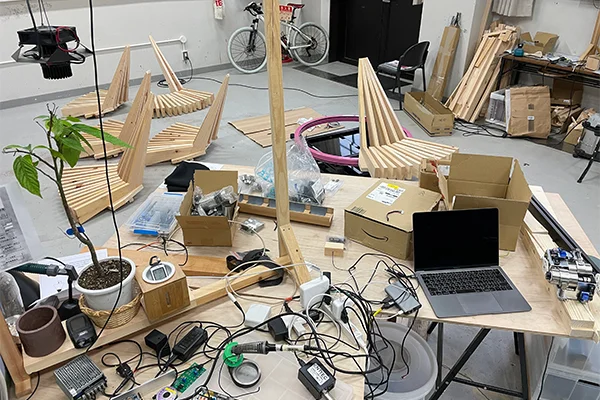
Message to Artists Renting the Studio
For visual artists who do not adhere to a specific format and are constantly exploring new methods and media, Studio 1 and Studio 2 offer an ideal environment. These studios provide access to water and a reliable internet connection, making them well-suited for online-based art and projects that involve natural phenomena or life forms.
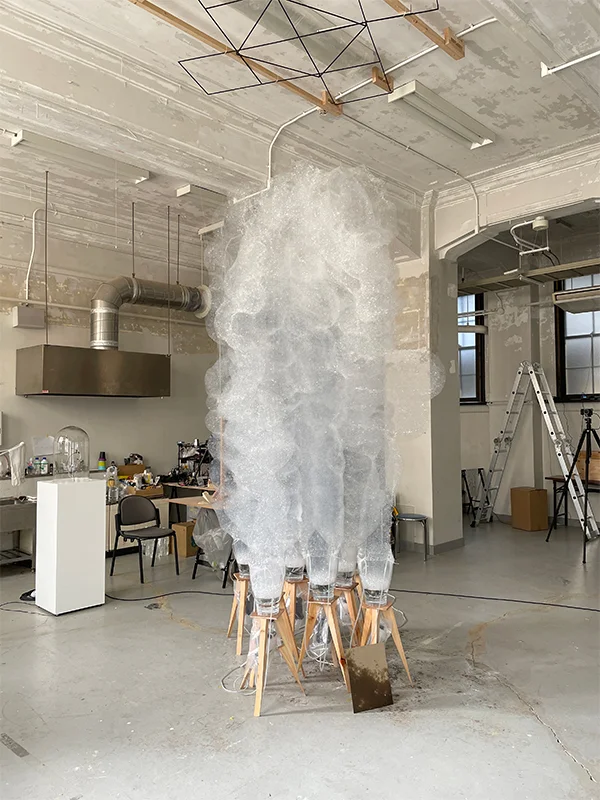
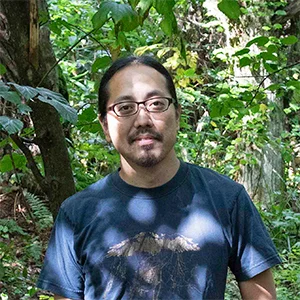
Soichiro Mihara
Artist. Presenting a system open to the world, attempting to reinterpret matter and phenomena as “art,” including sound, foam, radiation, rainbows, microorganisms, moss, airflow, soil, and electronics.
Place to Reconnect with Our Roots
Kyoto Philomusica Orchestra
Benefits of Renting a Studio
Kyoto Art Center is an incredibly valuable place for us, who are based primarily in Kyoto, as it provides us with a comfortable space for practice. Additionally, being able to interact closely with the locals through workshops and other events has been a precious experience for us, especially since we usually perform in large halls centered around Kyoto.
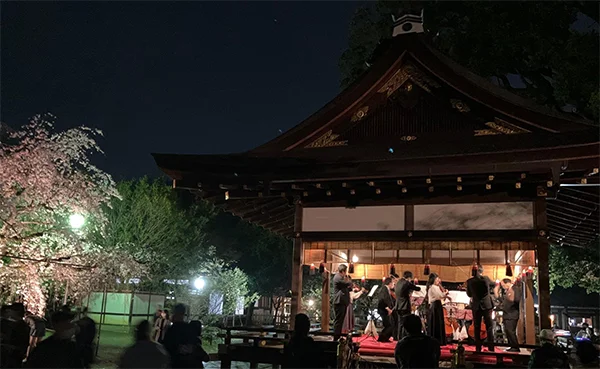
Message to Artists Renting the Studio
Having a place like this in the heart of Kyoto is truly a blessing. It not only allows for interaction with the community through workshops but also serves as a new platform for activities across various genres. We encourage everyone to take advantage of this wonderful resource.
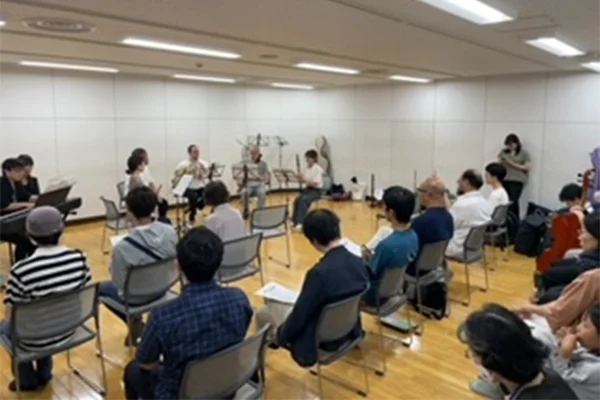
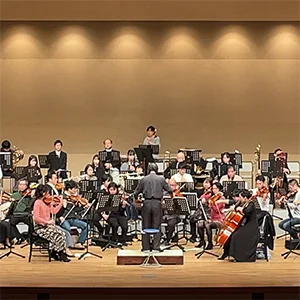
Kyoto Philomusica Orchestra
An amateur orchestra founded in 1996, composed of students and working professionals. In addition to biannual regular concerts, they also perform at smaller concerts upon request.
School-like Environment Where You Visit Daily and See the Work Mature
akakilike
Midori Kurata
Benefits of Renting a Studio
This place is more than just a quick gathering spot for creating; it’s a sanctuary where we can spend time alone to reflect and prepare ourselves. I’m deeply grateful for this opportunity, as I believe such time is essential for producing quality work.
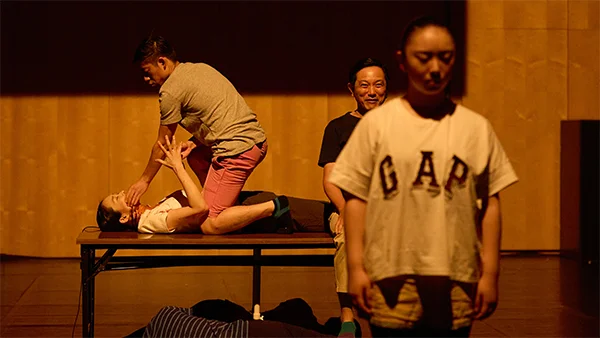
Message to Artists Renting the Studio
Having a rehearsal space like this is a true blessing. It’s incredibly rare to find a place where we can use our time so freely and luxuriously. The hours spent rehearsing and contemplating here are invaluable. I hope everyone makes the most of this time and continues to produce exceptional work.
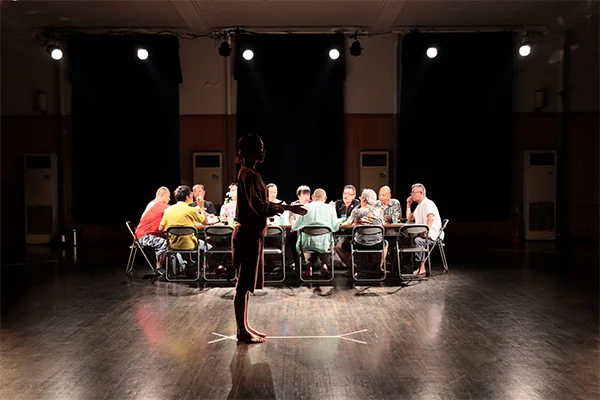
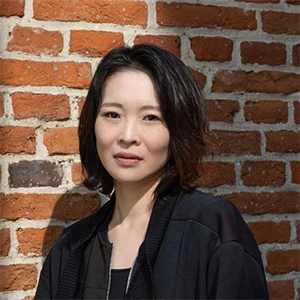
akakilike
Midori Kurata
Midori Kurata is a director, choreographer, and dancer based in Kyoto. Since 2016, she has been the head of akakilike, a group consisting solely of Midori Kurata and technical staff. The group aims to involve actors and staff equally in the creation of their works.
profile photo by Bea Borgers
Life-changing, Transformative and Impactful
Jenna Lee
Benefits of Joining AIR
The best part of my time in the Artist-in-Residence Program at Kyoto Art Center was exploring similarities between different cultures and traditions, joining hands-on workshops, and fully immersing myself in Kyoto life. Sharing my findings and delving into my ancestral Japanese heritage during artist talks and open studios added even more depth to my experience.
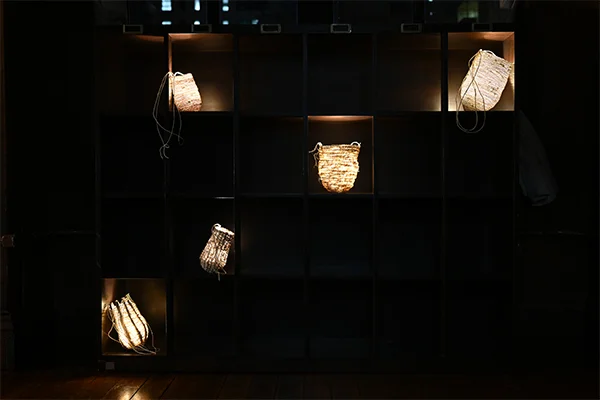
Message to Artists Joining AIR
Embrace the chance for exploration and exchange. Dive into Kyoto’s rich cultural traditions while freely innovating and pushing boundaries. Participate in workshops, connect with local craftspeople and the community, and soak up the vibrant arts scene. Your time here will be life-changing, inspirational and enriching.
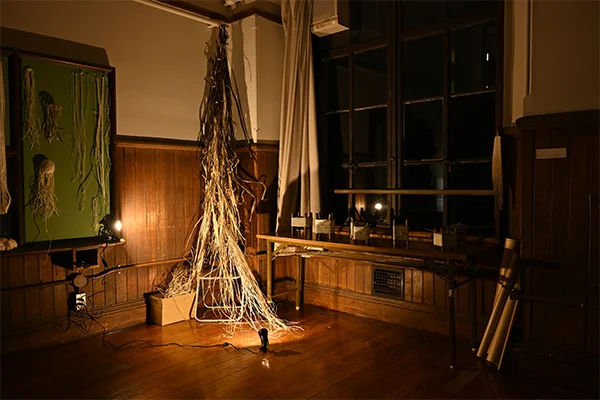
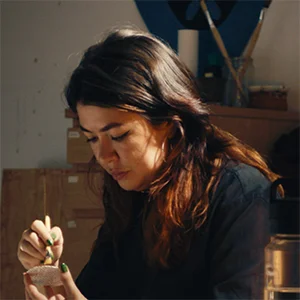
Jenna Lee
profile photo by James Westland
BATH OF DARKNESS. FOREST INSIDE THE BODY.
Emilia Álvarez
Benefits of Joining AIR
To be part of the Japanese culture and arts, in the heart of Kyoto. Make local friends, exchange and collaborate with local artists. I have been able to expand my work thanks to my research on Shinrin Yoku and Butoh with great references. To have been inspired by fascinating local exhibitions and festivals. To have been able to hold a final exhibition in the Japanese style Tatami room.
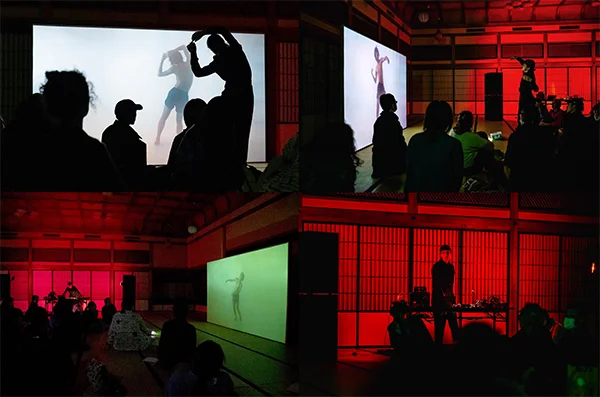
Message to Artists Joining AIR
I encourage you to apply for this call. And live this transformative artistic experience in Kyoto. Kyoto Art Center is a place very rich in the culture and artistic traditions of Japan, the exchange with all the people who work in KAC is very enriching and the city and its cultural proposal is inspiring, empowering and expanding the limits of one’s own artistic work.
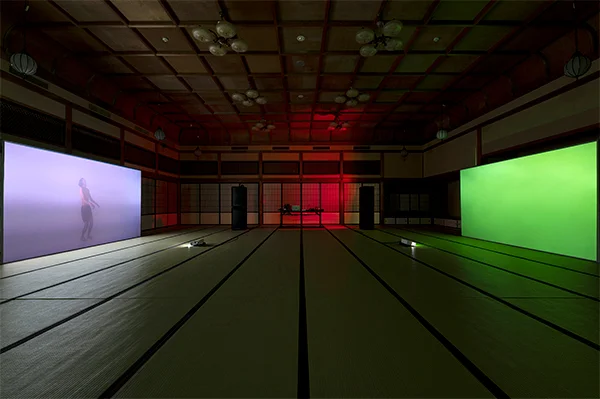
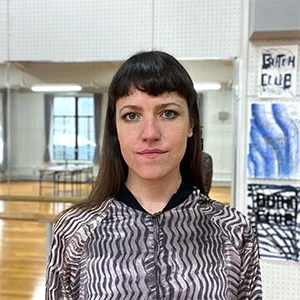
Emilia Álvarez
Collaborative Experience That Embraces Bold and Outlandish Ideas
Yuki Harada
Benefits of Joining Co-program
Collaborating with the staff at Kyoto Art Center, who not only had an artist’s mindset but also fully supported us, was a fantastic experience. It allowed young artists like us to realize exhibitions on a grand scale, something that would be challenging in galleries. Additionally, we were able to create exhibitions with daring and innovative content, which would typically be difficult to achieve in museums.
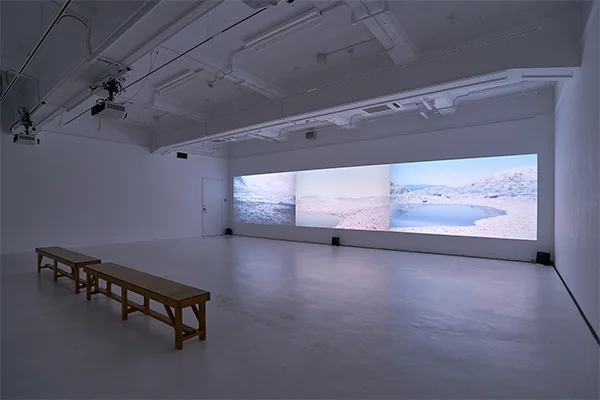
Message to Artists Joining Co-program
What made Kyoto Art Center stand out was its openness to any proposal, no matter how unconventional. This often led us to ask, “Is it really okay to do this?” The artists at the center, who are also collaborative professionals, are most appreciative of such bold proposals that surprise and challenge them. Keep up the great work!
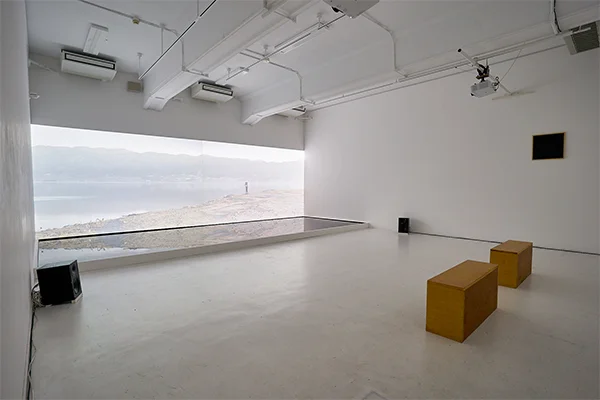
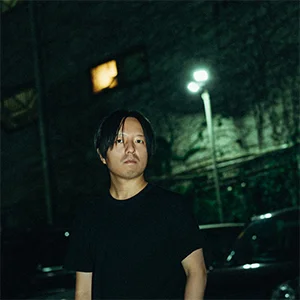
Yuki Harada
Artist. Yuki Harada is an artist who utilizes technology, research, performance, and other means to explore the theme of what it means to be human.
profile photo by Kaori Nishida
Find Joy in Failure And Embrace the Unknown
Masashi Nukata × Megumi Yamashita
Benefits of Joining Co-program
Not leaving things that don’t go well as they are—that stoic approach, combined with the leisurely creative time that allows for many failures, was a valuable experience.(Nukita)
In an environment where we could use the spacious grounds to repeatedly try small experiments, we were able to rethink the nature of creation and performance.(Yamashita)
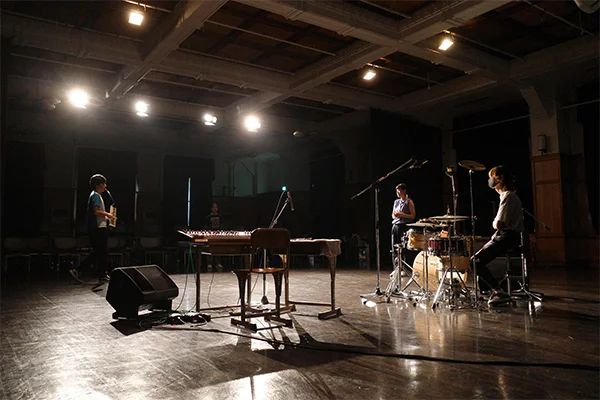
Message to Artists Joining Co-program
The Kyoto Art Center and its surroundings are home to unique individuals who find joy in trying out ideas on a whim, probably still today. So, go ahead and apply!(Nukita)
Creating in the open space of the Kyoto Art Center is a fantastic opportunity to foster exchanges and support new endeavors.(Yamashita)
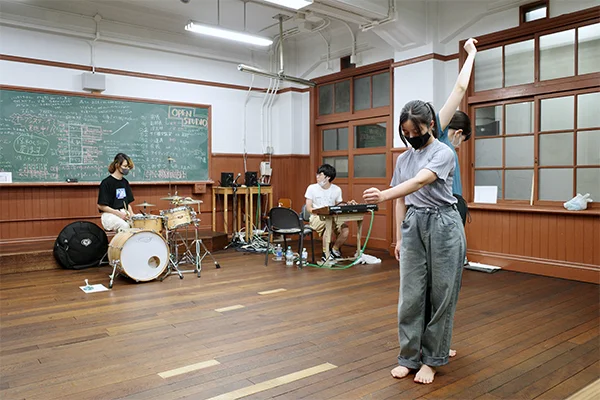
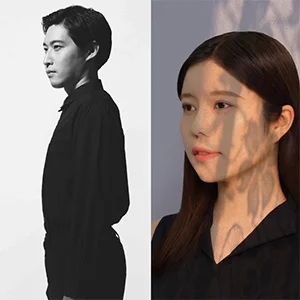
Masashi Nukata × Megumi Yamashita
Masashi Nukata: Composer and Director, leading the eight-member band Tokyo Shiokouji and the theater company Nuthmique. He explores the essence of performance, using the musical background to create scripts and direct performances that expand the framework of performing arts.
Megumi Yamashita: Director and Choreographer. In addition to creating theater and dance pieces, her diverse activities include participating in collectively created theater works, appearing in music videos, and hosting dance workshops.
